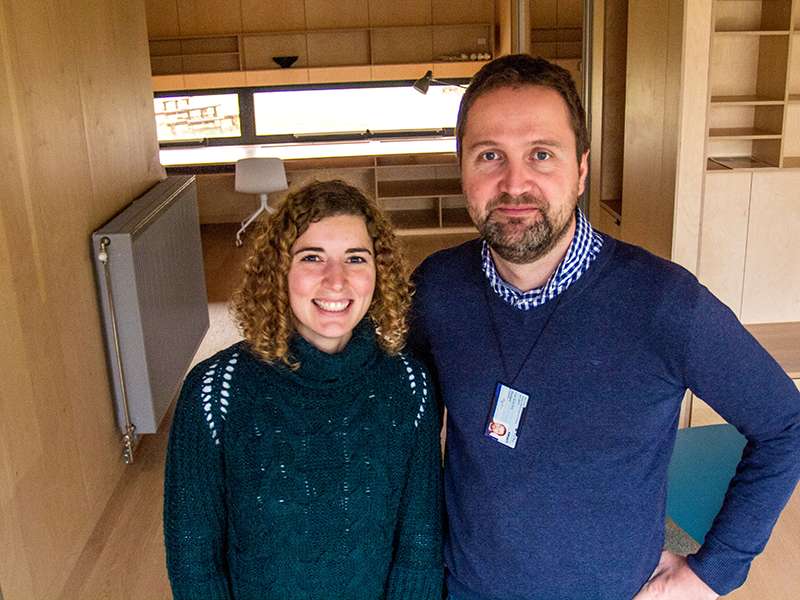One radiator to heat a whole floor

Saving energy from building highly insulated homes—often called passive homes or zero-emissions homes—makes sense for the climate and for the homeowner's pocketbook. But what happens if your efficient home is a little too efficient, and parts are too warm?
Better-insulated homes have less heat loss, which reduces the space-heating needs and the demands on the building's heating system. Super-insulated homes like passive houses or zero-emissions buildings (ZEBs) decrease the heating demand so much that you don't need to place a heater in every room or in front of every window.
In a new study, researchers at the Norwegian University of Science and Technology (NTNU) and SINTEF, Scandinavia's largest independent research institute, investigated the energy performance of row houses and apartments built according to the Norwegian passive house standard and with a reduced number of radiators.
"Our goal has been to find a good balance between energy efficiency and user satisfaction with temperature and comfort, says associate professor Laurent Georges at NTNU's Department of Energy and Process Engineering.
"With only one radiator per floor, you might expect that users would find the rooms without radiators too cold, but we found the opposite. The overall thermal comfort in the living areas was good. The challenge was more that people who prefer cold bedrooms found the bedrooms too warm," he says.
Simulated, measured and interviewed
The researchers studied two apartments and two row houses built to the Norwegian passive house standards. They made computer simulations of the buildings to figure out the optimal way to adjust the room temperature and meet user expectations in all the different rooms. Field measurements taken in the buildings recorded the air intake temperatures, ambient temperature, air supply and heat recovery. And researchers interviewed the residents.
This heating method is called simplified heat distribution. Having one radiator per floor – in concert with a balanced ventilation system – reduces installation and material costs, and decreases heat loss from the ductwork by shortening the length of ducts needed.
Passive house design frees you from worrying about uncomfortable drafts from bad windows or cold exterior walls and means you don't need to place a radiator in front of each window. And because the supply air is intended to distribute the temperature more evenly throughout the rooms, you only need one radiator for multiple rooms, or one radiator per floor.
Bedrooms "too warm"
With a simplified heat distribution system, people who want a warm bedroom can have it, especially if they keep the internal doors open.
"Several participants in our study complained of overheated bedrooms. Norwegians usually want cool bedrooms (below 16 ° C). This doesn't work without opening the windows, even if they keep the bedroom door closed all day," says researcher Maria Justo-Alonso at SINTEF.
"Unfortunately, this way of regulating the bedroom temperature has major consequences for the heating needs for the entire house," she says.
Researchers have examined several strategies to adjust how individual rooms are heated.
Better for office buildings?
"We achieved our goal of simplified space heating, since most participants were satisfied with the overall room temperature. But we stumbled across another challenge – that it's difficult to zone for multiple temperatures inside the apartment if residents want that," says Georges.
Currently the researchers are working on solutions to lower the temperature of bedrooms in these kinds of housing units, without increasing the total energy use in the home.
Justo-Alonso and Georges' study also raises questions as to whether it is possible to use preheated ventilation air as the only form of heating in passive and other homes with low heating needs, since this leads to even higher bedroom temperatures. On the other hand, recent studies show that centralized air heating may be a good option for office buildings.
More information: Laurent Georges et al. Simplified Space-heating Distribution Using Radiators in Super-insulated Apartment Buildings, Energy Procedia (2016). DOI: 10.1016/j.egypro.2016.09.177
Provided by Norwegian University of Science and Technology




















